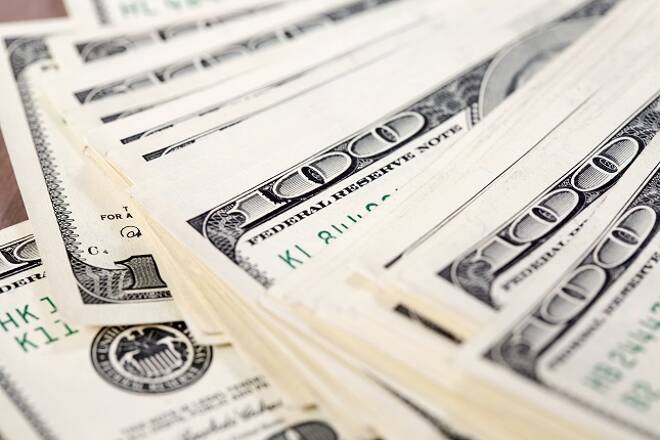Advertisement
Advertisement
U.S. Dollar Tracking Treasury Yields
By:
The U.S. Dollar started the week under pressure as investors reacted to the outcome of the French Presidential election. The early selling stopped
The U.S. Dollar started the week under pressure as investors reacted to the outcome of the French Presidential election. The early selling stopped abruptly as buyers came in strong to stop the price slide and trigger a technical reversal on the daily charts.
June U.S. Dollar Index futures finished the week at 99.131, up 0.603 or +0.61%.
The dollar continued to rise against most major currencies, especially the Japanese Yen, as investors continued to drive up U.S. Treasury yields in anticipation of a Fed rate hike in June.
The rally started to stall after the Dollar/Yen topped out as investors pared their positions after President Trump abruptly fired FBI Director James Comey. The news drove investors into lower-yielding assets because the political fallout from the firing may mean another delay in President Trump’s economic agenda.
Investors are now worried that this issue will turn into a major distraction for the Trump Administration that could lead to a delay in getting healthcare and tax reform passed as well as new laws on deregulation and increased spending on infrastructure.
In economic news, the good news for the U.S. economy was higher than expected producer inflation data and better-than-expected weekly unemployment claims.
The Dollar was pressured at the end of the week by weaker-than-expected U.S. consumer inflation and retail sales. The strongest influence on the weaker dollar was the retail sales number because it raised concerns about the number of possible rate hikes by the Fed in 2017.
Australian Dollar
The Aussie Dollar fell to a 4-month low after disappointing retail sales reinforced expectations of neutral interest rates by the Reserve Bank of Australia for months to come. Retail sales fell by 0.1 percent from a month earlier, the Australian Bureau of Statistics said, compared with a 0.3 percent increase expected by economists.
The AUD/USD settled at .7386, down 0.0027 or -0.37%.
Traders said demand for food retail and household goods contributed to the fall in March.
The report also said retail sales in the first quarter increased by just 0.1 percent, below the 0.5 percent growth expected by economists.
New Zealand Dollar
The Kiwi dropped after the Reserve Bank of New Zealand surprised investors by keeping its interest rate track unchanged, despite recent data showing a spike in inflation and a strong labor market.
The NZD/USD closed the week at .6855, down 0.0061 or -0.89%.
The RBNZ kept the official cash rate at 1.75 percent as expected, and Governor Graeme Wheeler stuck to his view that the rate doesn’t need to move until 2019, saying a recent spike in inflation from movements in oil and food prices will only be temporary.
The monetary policy statement was far more dovish than traders expected, sending the NZD/USD plunging sharply lower. The statement and subsequent comments from Wheeler put the RBNZ at odds with a number of economists, who expect it will have to raise rates earlier than 2019, however Wheeler told Parliament’s finance and expenditure select committee that he wasn’t seeing significant wage inflation and that weaker than expected growth last year meant there wasn’t the same capacity pressures the bank may have been anticipating.
About the Author
James Hyerczykauthor
James is a Florida-based technical analyst, market researcher, educator and trader with 35+ years of experience. He is an expert in the area of patterns, price and time analysis as it applies to futures, Forex, and stocks.
Did you find this article useful?
Latest news and analysis
Advertisement
